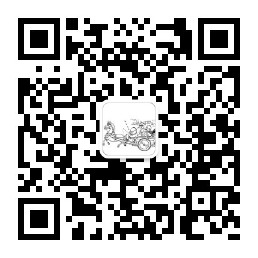前幾天寫了一篇文章【淺談WPF之控制項模板和數據模板】,有粉絲反饋說這兩種模板容易弄混,不知道什麼時候該用控制項模塊,什麼時候該用數據模板,以及template和itemtemplate之間的關係等,今天專門寫一篇文章,簡述WPF中各種模板及其相互關係。僅供學習分享使用,如有不足之處,還請指正。 ...
前幾天寫了一篇文章【淺談WPF之控制項模板和數據模板】,有粉絲反饋說這兩種模板容易弄混,不知道什麼時候該用控制項模塊,什麼時候該用數據模板,以及template和itemtemplate之間的關係等,今天專門寫一篇文章,簡述WPF中各種模板及其相互關係。僅供學習分享使用,如有不足之處,還請指正。

概述
在WPF中,一共有三種模板,分別如下:
- 控制項模板ControlTemplate,用來指定控制項的呈現樣式。
- 數據模板DataTemplate,用來指定子項數據的呈現樣式。
- 子控制項模板ItemPanelTemplate,用來指定子項控制項的佈局樣式。
模板與控制項之間的關係
關於各個模板與控制項之間的關係,如下圖所示:

通過上圖可以看出:
- Control擁有Template屬性,是ControlTemplate類型,所有Control派生的子控制項,都具有Template屬性,都可以通過控制項模板設置控制項的樣式。
- ContentControl擁有ContentTemplate屬性,是DataTemplate類型,所有ContentControl派生的控制項,都具有ContentTemplate屬性,如Button,ListBoxItem,DataGridCell等。
- ItemsControl擁有ItemsTemplate屬性,是DataTemplate類型,所有ItemsControl派生的控制項,都具有ItemsTemplate屬性,如ListBox,ComboBox,DataGrid,ListView等。
- ItemsControl擁有ItemsPanel屬性,是ItemsPanelTemplate類型,所有ItemsControl派生的控制項,都具有ItemsPanel屬性,如ListBox,ComboBox,DataGrid,ListView等。
- Template,ContentTemplate,ItemsTemplate,ItemsPanel只是屬性名稱,而DataTemlate,ControlTemplate,ItemsPanelTemplate才是模板類型。
ControlTemplate控制項模板詳解
利用ControlTemplate可以徹底的顛覆控制項的預設外觀。<ControlTemplate>裡面的內容就是視覺樹VisualTree。
兩個重要屬性:
a)ContentPresenter
重定義控制項模板,預設模板將會被覆蓋,此時需要利用ContentPresenter,把原有模板的屬性原封不動的投放到自定義模板中。
b)Triggers
觸發器列表,裡面包含一些觸發器Trigger,我們可以定製這個觸發器列表來使控制項對外界的刺激發生反應,比如滑鼠經過時文本變成粗體等。
控制項模板示例
<Window x:Class="WpfApplication1.MainWindow"
xmlns="http://schemas.microsoft.com/winfx/2006/xaml/presentation"
xmlns:x="http://schemas.microsoft.com/winfx/2006/xaml"
xmlns:sys="clr-namespace:System;assembly=mscorlib"
Title="MainWindow" Height="350" Width="525">
<Window.Resources>
<ControlTemplate x:Key="rect" TargetType="{x:Type CheckBox}">
<ControlTemplate.Resources>
<SolidColorBrush x:Key="redBrush" Color="Red"/>
</ControlTemplate.Resources>
<StackPanel>
<Rectangle Name="breakRectangle" Stroke="Red" StrokeThickness="2" Width="20" Height="20">
<Rectangle.Fill>
<SolidColorBrush Color="White"/>
</Rectangle.Fill>
</Rectangle>
<ContentPresenter/>
</StackPanel>
<ControlTemplate.Triggers>
<Trigger Property="IsChecked" Value="True">
<Setter TargetName="breakRectangle" Property="Fill" Value="{StaticResource ResourceKey=redBrush}">
</Setter>
</Trigger>
</ControlTemplate.Triggers>
</ControlTemplate>
</Window.Resources>
<Canvas>
<CheckBox Template="{StaticResource ResourceKey=rect}" Content="我是CheckBox"/>
</Canvas>
</Window>註意:<ContentPresenter Margin="{TemplateBinding Padding}" /> 實現了將模板中的Margin綁定到原控制項中的Padding上去。
將控制項模板寫到樣式裡面,如下所示:
<Style x:Key="cbx" TargetType="{x:Type CheckBox}">
<Setter Property="Template">
<Setter.Value>
<ControlTemplate TargetType="{x:Type CheckBox}">
<ControlTemplate.Resources>
<SolidColorBrush x:Key="redBrush" Color="Red"/>
</ControlTemplate.Resources>
<StackPanel>
<Rectangle Name="breakRectangle" Stroke="Red" StrokeThickness="2" Width="20" Height="20">
<Rectangle.Fill>
<SolidColorBrush Color="White"/>
</Rectangle.Fill>
</Rectangle>
<ContentPresenter/>
</StackPanel>
<ControlTemplate.Triggers>
<Trigger Property="IsChecked" Value="True">
<Setter TargetName="breakRectangle" Property="Fill" Value="{StaticResource ResourceKey=redBrush}">
</Setter>
</Trigger>
</ControlTemplate.Triggers>
</ControlTemplate>
</Setter.Value>
</Setter>
</Style>通過綁定樣式資源,如下所示:
<CheckBox Style="{StaticResource ResourceKey=cbx}" Content="我是CheckBox"/>
c)ItemsPresenter
繼承自ItemsControl的控制項,有一個ItemsPanel屬性作為集合元素承載容器。子元素ItemsPresenter負責呈現控制項的任務。
只要把ItemsPresenter放在內部模板中,那麼ItemsPresenter則會去檢測父元素是否為集合控制項,然後將ItemsPanel添加到其內部視覺樹當中。
<Style x:Key="{x:Type ItemsControl}" TargetType="{x:Type ItemsControl}">
<Setter Property="Template">
<Setter.Value>
<ControlTemplate TargetType="{x:Type ItemsControl}">
<Border Background="{TemplateBinding Background}"
BorderBrush="{TemplateBinding BorderBrush}"
BorderThickness="{TemplateBinding BorderThickness}"
Padding="{TemplateBinding Padding}"
SnapsToDevicePixels="true">
<ItemsPresenter SnapsToDevicePixels="{TemplateBinding SnapsToDevicePixels}"/>
</Border>
</ControlTemplate>
</Setter.Value>
</Setter>
</Style>比較常見的繼承自ItemsControl的控制項,比如ComboBox,ContextMenu,ListBox,DataGrid,ListView等。
DataTemplate數據模板詳解
數據模板定義了數據的顯示方式,也就是數據對象的可視結構。主要是可以自定義控制項的同時進行數據綁定。
<Window x:Class="WpfApplication1.MainWindow"
xmlns="http://schemas.microsoft.com/winfx/2006/xaml/presentation"
xmlns:x="http://schemas.microsoft.com/winfx/2006/xaml"
xmlns:sys="clr-namespace:System;assembly=mscorlib"
xmlns:src="clr-namespace:WpfApplication1"
Title="MainWindow" Height="350" Width="525">
<Window.Resources>
<ObjectDataProvider x:Key="personList" ObjectType="{x:Type src:PersonList}"/>
<DataTemplate x:Key="rect">
<Border Name="border" BorderBrush="Aqua" BorderThickness="1" Padding="5" Margin="5">
<StackPanel>
<StackPanel Orientation="Horizontal">
<TextBlock Text="{Binding Name}" Margin="5,0,0,0"/>
<TextBlock Text="{Binding Age}" Margin="5,0,0,0"/>
</StackPanel>
<StackPanel Orientation="Horizontal">
<TextBlock Text="{Binding Address}" Margin="5,0,0,0"/>
</StackPanel>
</StackPanel>
</Border>
</DataTemplate>
</Window.Resources>
<Grid>
<ListBox ItemsSource="{Binding Source={StaticResource ResourceKey=personList}}"
ItemTemplate="{StaticResource ResourceKey=rect}"></ListBox>
</Grid>
</Window>註意這裡在調用時應該綁定的是 ItemTemplate 屬性。
ItemPanelTemplate詳解
首先我們要知道常見的條目控制項有:ListBox,Menu,StatusBar等。
比如拿ListBox來說,ItemBox的ItemPanel其實是一個VisualizingStackPanel,就是說ListBox的每一項的排列方式是遵循StackPanel的
原則,也就是從上到下的排列方式。如果要實現從左到右排列:
<Window x:Class="WpfApplication1.MainWindow"
xmlns="http://schemas.microsoft.com/winfx/2006/xaml/presentation"
xmlns:x="http://schemas.microsoft.com/winfx/2006/xaml"
xmlns:sys="clr-namespace:System;assembly=mscorlib"
xmlns:src="clr-namespace:WpfApplication1"
Title="MainWindow" Height="350" Width="525">
<Window.Resources>
<ObjectDataProvider x:Key="personList" ObjectType="{x:Type src:PersonList}"/>
<DataTemplate x:Key="rect">
<Border Name="border" BorderBrush="Aqua" BorderThickness="1" Padding="5" Margin="5">
<StackPanel>
<StackPanel Orientation="Horizontal">
<TextBlock Text="{Binding Name}" Margin="5,0,0,0"/>
<TextBlock Text="{Binding Age}" Margin="5,0,0,0"/>
</StackPanel>
<StackPanel Orientation="Horizontal">
<TextBlock Text="{Binding Address}" Margin="5,0,0,0"/>
</StackPanel>
</StackPanel>
</Border>
</DataTemplate>
<ItemsPanelTemplate x:Key="items">
<StackPanel Orientation="Horizontal" VerticalAlignment="Center" HorizontalAlignment="Center"/>
</ItemsPanelTemplate>
</Window.Resources>
<Grid>
<ListBox ItemsSource="{Binding Source={StaticResource ResourceKey=personList}}"
ItemTemplate="{StaticResource ResourceKey=rect}" ItemsPanel="{StaticResource ResourceKey=items}"></ListBox>
</Grid>
</Window>也就是說,ItemsPanelTemplate可以用來定義集合控制項的容器外觀。
總結
1、Template
控制項模板,是指整個控制項的展示和佈局。
如ComboBox,可分為文本區域,下拉按鈕區域,Items的Popup區域。
Template就是管理這些位置的佈局。
2、ItemsPresenter
可以簡單理解為占位符,在樣式中使用,標記著這個區域用來展示該控制項的Items。
如:ComboBox的下拉列表的可選項。
但是,只負責顯示,而不能管理如何顯示,如果我們要內容橫向排列,就要用到ItemsPanel。
3、ItemsPanel
管理Items的排列方式,如,ComboBox預設是豎直排列的,我們要橫著排列,只需要定義ItemsPanel為WrapPanel,就可以了。
這時候Items的排列方式已經完成,如果還要讓ComboBox的每個項都重寫,比如,背景、圖標等,就要用到ItemContainerStyle。
4、ItemContainerStyle
就是每個項的樣式,自己重寫,就可以定製出每個項的樣式了。
以上就是淺談WPF之各種模板的全部內容。
 作者:小六公子
作者:小六公子
出處:http://www.cnblogs.com/hsiang/
本文版權歸作者和博客園共有,寫文不易,支持原創,歡迎轉載【點贊】,轉載請保留此段聲明,且在文章頁面明顯位置給出原文連接,謝謝。
關註個人公眾號,定時同步更新技術及職場文章


